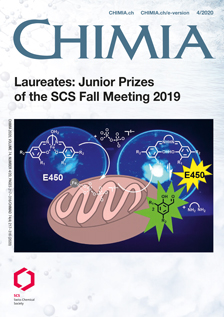Molecular Approach to Generate Cu(II) Sites on Silica for the Selective Partial Oxidation of Methane
DOI:
https://doi.org/10.2533/chimia.2020.237PMID:
32331539Keywords:
Copper, Molecular approach, Oxide support, Partial oxidation of methane, Surface organometallic chemistryAbstract
The selective partial oxidation of methane to methanol remains a great challenge in the field of catalysis. Cu-exchanged zeolites are promising materials, directly and selectively converting methane to methanol with high yield under cyclic conditions. However, the economic viability of these aluminosilicate materials for potential industrial applications remains a challenge. Exploring copper supported on non-microporous oxide supports and rationalising the structure/reactivity relationships extends the scope of material investigation and opens new possibilities. Recently, copper on alumina was demonstrated to be active and selective for the partial oxidation of methane. This work aims to explore the formation of well-defined Cu(II) oxo species on silica via surface organometallic chemistry and examines their reactivity for the selective transformation of methane to methanol. Isolated Cu(II) sites were generated via grafting of a tailored molecular precursor. Activation under oxidative conditions and subsequent removal of organic moieties from the grafted copper centres led to the formation of small copper (II) oxide clusters, which are active in the partial oxidation of methane under mild conditions, albeit significantly less efficient than the corresponding isolated Cu(II) sites on alumina.Downloads
Published
2020-04-29
How to Cite
[1]
J. Meyet, M. A. Newton, J. A. van Bokhoven, C. Copéret, Chimia 2020, 74, 237, DOI: 10.2533/chimia.2020.237.
Issue
Section
Scientific Articles
License
Copyright (c) 2020 Jordan Meyet, Mark A. Newton, Jeroen A. van Bokhoven, Christophe Copéret

This work is licensed under a Creative Commons Attribution-NonCommercial 4.0 International License.







